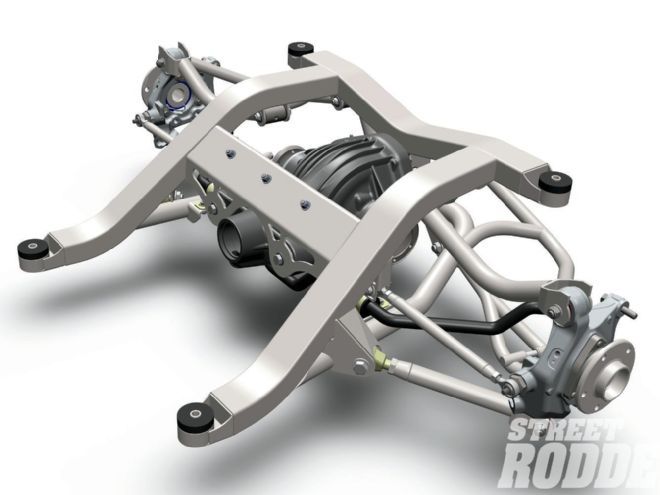
Like production automobiles, street rods continue to become more refined. Certainly for many of us (with the notable exception of Brennan) there will always be a place in our hearts for buggy sprung solid axles and Flatheads, but we've embraced incorporating the technological advancements found on new cars in our street rods as well.
When independent front and rear suspension kits for street rods first appeared, the visual goals were to improve the ride quality or increase the "wow" factor. For the most part handling was not a major consideration, as carving corners was not a priority—but things have changed and in large part it's due to a former drag racer by the name of Art Morrison.
Although he was nuts enough to be strapped into an exhibition wheel stander, Art also had the talent to build a bundle of race-winning chassis, develop a long list of drag race–oriented components, as well as the revolutionary SuperCar kit. These pre-cut frames were CAD designed for specific applications and made it easy for racers to have a first-class chassis that was safe and went straight.
Thanks to the Pro Street movement in the mid 1990s more of Art's products found their way to the street and that turned out to be an indication of things to come. Shortly after Art's son, Craig, joined the company in 2000, Art Morrison Enterprises (AME) introduced their first reproduction chassis for Tri-Five Chevys. With the frame and suspension designed in-house by Matt Jones, the first chassis was debuted in 2002 under an innocent-looking 1955. Track testing revealed performance that rivaled a new C6 Corvette and made Porsche owners talk to themselves. It didn't take long for the opportunity to have a vintage car with state-of-the-art (no pun intended) road manners to make AME's phone ring off the hook, with sales of Tri-Five chassis numbering 1,100 to date.
While team Morrison had a hit on their hands they didn't rest on their laurels and began offering chassis/suspension packages for an array of vehicles, including Corvettes, Camaros, GM A-bodies, 1949-54 Chevy cars, and 1947-53 Chevy trucks. And if a one-off, mandrel-bent frame and custom front and rear suspension were required for almost anything with wheels, they could meet those needs as well. Many pro builders have based their work on an AME chassis.
AME has certainly been instrumental in ushering in a new breed of well-rounded performance automobiles—Grand Touring Street Rods, if you will—and their latest effort in that area continues a well-established theme. Along with their independent front suspension they now offer the AME Multilink IRS.
Independent rear suspensions come in many forms, and most rodders are familiar with adaptations based on Jag and early Corvette components—but while both looked cool, they did have their shortcomings. The Jag suffered from deflection issues, a situation exacerbated when lots of horsepower or big brakes were added—the application of either could cause toe changes and there were camber issues as well. The 1963-67 Vette rearend had similar issues, as toe changes occurred during braking and acceleration. So while these early IRS systems, and many that followed, were adequate in their day, for most performance applications they come up short. Comparing most other IRS systems to a multilink is like comparing electronic fuel injection is to a carburetor. The newer technology is vastly superior.
Basically, the multilink is just what the name implies—there are several links that attach the spindle/knuckle assembly to the chassis. Compared to less sophisticated designs, the multilink offers improved toe and camber control, more antisquat under acceleration, and better support for knuckle, which is another way of saying that the travel of the wheels through their range of suspension travel is precisely controlled, which improves handling. Another term used to describe multi-link IRS is "functionally independent"—that means that during the design phase one function, be it caster, camber, or toe, does not impact any other.
Considering that this is the same type of suspension found under the rear of performance cars, with nameplates such as Ferrari, Mercedes, Porsche, BMW, Nissan, and Lexus, the AME Multilink IRS is in very fast company. Testing of the prototype under Matt Jones' first-gen Camaro validates AME's confidence in the design as a result it will be available as an option on all replacement chassis—it's a great way to get four-wheel independence for all.
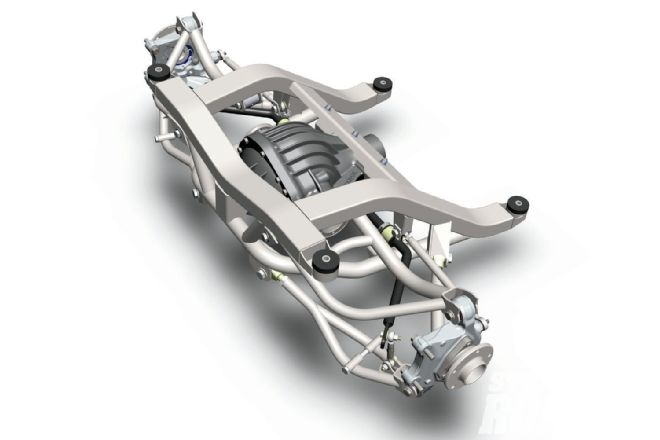 According to AME’s resident engineer, Matt Jones, “this suspension system is functionally independent with improved load paths and more knuckle support. The driver’s control over the car is much better than other setups. If you are worried about the longitudinal and lateral stiffness being soft, multilink stiffness is way higher.”
According to AME’s resident engineer, Matt Jones, “this suspension system is functionally independent with improved load paths and more knuckle support. The driver’s control over the car is much better than other setups. If you are worried about the longitudinal and lateral stiffness being soft, multilink stiffness is way higher.”
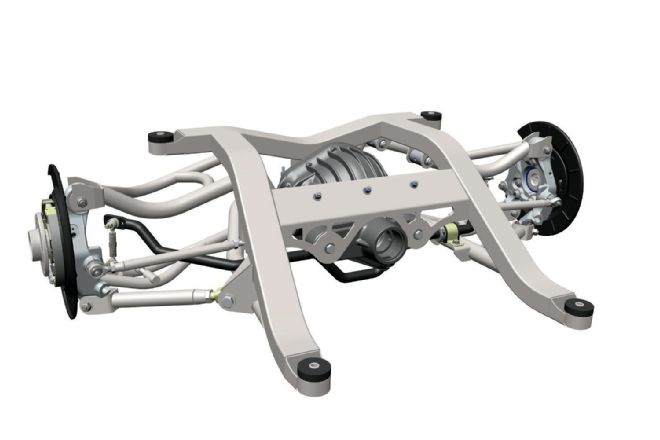 AME’s Multilink IRS was designed in-house with special consideration given to the tread width requirements, which will be from 55-1/2 inches to 61-1/2 in 2-inch increments.
AME’s Multilink IRS was designed in-house with special consideration given to the tread width requirements, which will be from 55-1/2 inches to 61-1/2 in 2-inch increments.
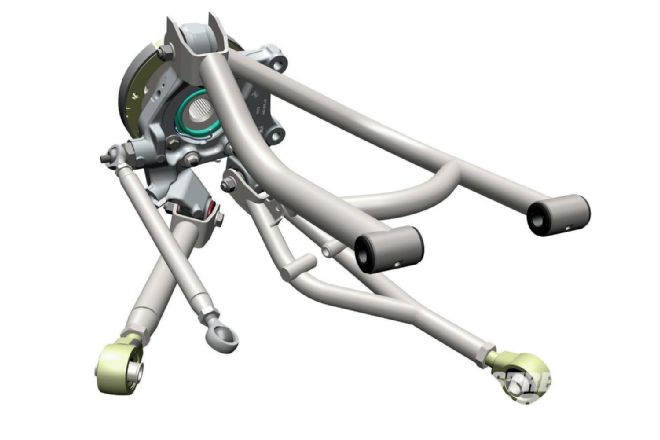 Hubs and spindle assemblies are fifth-generation Camaro. Bushings designed for this application eliminate any deflection that could adversely impact suspension geometry.
Hubs and spindle assemblies are fifth-generation Camaro. Bushings designed for this application eliminate any deflection that could adversely impact suspension geometry.
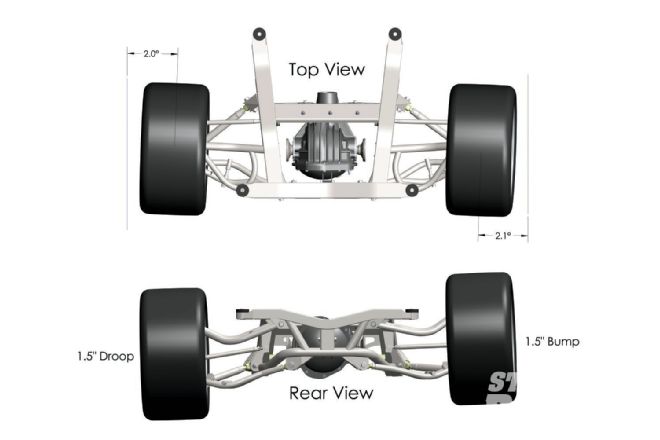 The design of this IRS eliminates toe out under acceleration while specially designed toe geometry allows the rear wheels steer the car turn into corners. As an assembly the AME Multilink lowers un-sprung weight by nearly 100 pounds when compared to a 12-bolt solid axle.
The design of this IRS eliminates toe out under acceleration while specially designed toe geometry allows the rear wheels steer the car turn into corners. As an assembly the AME Multilink lowers un-sprung weight by nearly 100 pounds when compared to a 12-bolt solid axle.
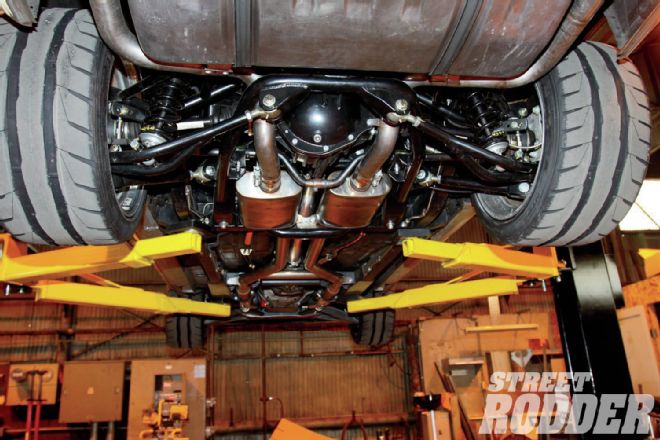 The prototype IRS was tested under Jones’ ’69 Camaro. Note the car is on an AME GT Sport Package chassis for first-generation Camaros.
The prototype IRS was tested under Jones’ ’69 Camaro. Note the car is on an AME GT Sport Package chassis for first-generation Camaros.
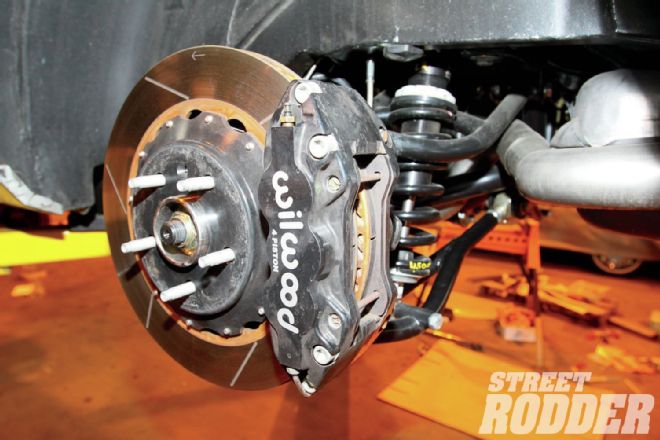 A variety of brake options will be available, including Wilwood 14.3-inch rotors with W6A calipers, or 14.4-inch with OEM Brembo calipers. In most cases 17- or 18-inch wheels will be required, while tire sizes are dependent on fender/body clearance.
A variety of brake options will be available, including Wilwood 14.3-inch rotors with W6A calipers, or 14.4-inch with OEM Brembo calipers. In most cases 17- or 18-inch wheels will be required, while tire sizes are dependent on fender/body clearance.
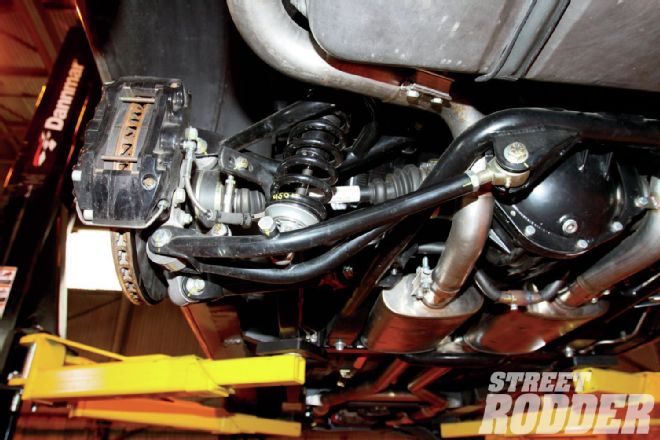 Double-adjustable coilovers are equipped with 450-pound springs. CV joints are GM while half-shafts are custom to accommodate the tread width.
Double-adjustable coilovers are equipped with 450-pound springs. CV joints are GM while half-shafts are custom to accommodate the tread width.
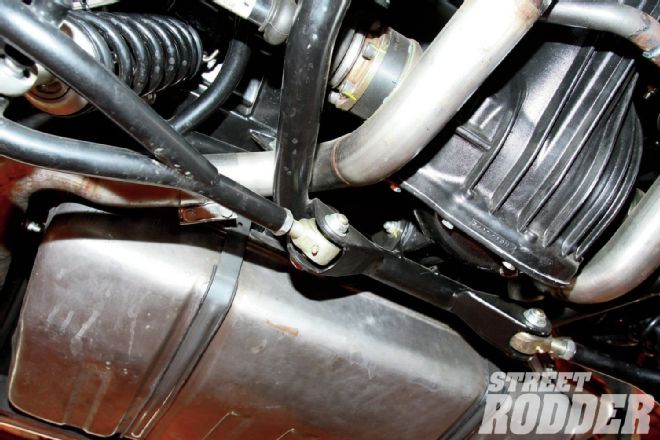 The centersection is a Dana 60 style from Strange—a wide array of gear ratios is available ranging from 3.54 to 4.10:1.
The centersection is a Dana 60 style from Strange—a wide array of gear ratios is available ranging from 3.54 to 4.10:1.